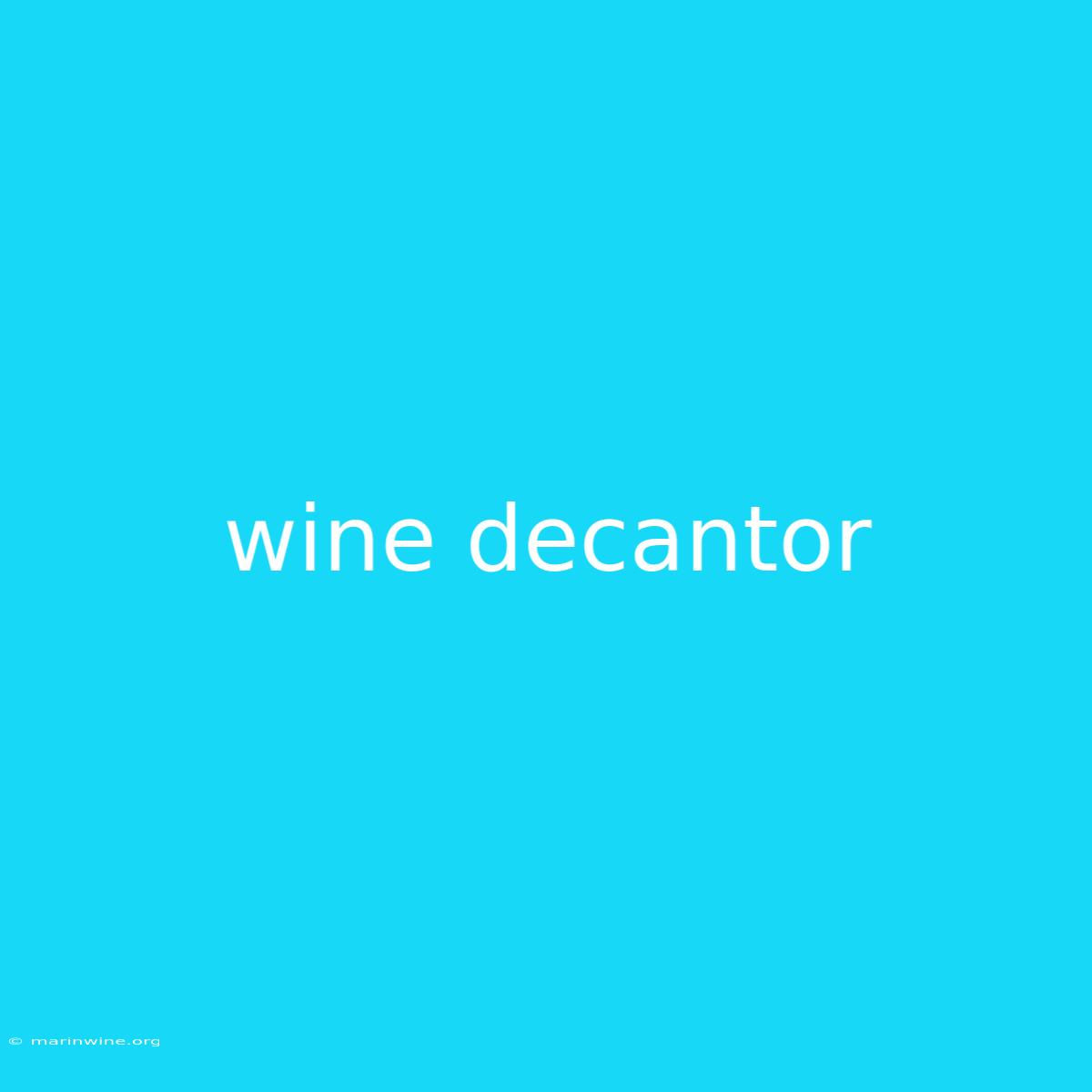Uncorking the Magic: A Guide to Wine Decanters
Editor's Note: Decanting wine has become a cherished ritual in the world of wine enthusiasts. But what exactly is a wine decanter, and why should you bother with this extra step? This article dives into the fascinating world of decanters, exploring their benefits, types, and how to use them to unlock the full potential of your favorite bottles.
Why Decant Wine?
Decanting wine is an essential practice for enhancing its flavor and aroma. It serves multiple purposes, including:
- Removing Sediment: Older wines often develop sediment (a harmless deposit of grape solids), which can be unpleasant to taste. Decanting allows you to separate the sediment from the wine, leaving you with a clean and crisp taste.
- **Aeration: ** The process of transferring wine from the bottle to the decanter exposes it to oxygen. This aeration softens harsh tannins, allowing the wine to "breathe" and release its full bouquet of aromas.
- Improved Flavor Profile: Decanting allows the wine to bloom and develop its complex flavors. This is especially true for young red wines, which can benefit from the gentle oxidation process.
Decanters: A World of Choices
Decanters come in a variety of shapes and sizes, each catering to different wines and personal preferences:
- Traditional: The classic, bulbous decanter with a narrow neck is designed for smooth pouring and optimal aeration.
- Modern: Sleek, minimalist designs with a wide base and a slim spout offer a contemporary aesthetic and ample aeration.
- Crystal: Elegant and exquisite, crystal decanters elevate the wine-drinking experience with their sparkle and beauty.
- Specific Wine Styles: Decanters for specific wines, like Cabernet Sauvignon or Burgundy, are designed to optimize the aeration and flavor profile for that particular grape variety.
The Art of Decanting
Decanting is more than just pouring wine into a fancy vessel. Here's how to master the art:
- Prepare: Choose a decanter that complements the style of wine you're decanting.
- Open the Bottle: Open the bottle and carefully inspect it for sediment.
- Pour Slowly: Holding the bottle at a 45-degree angle, pour the wine into the decanter, leaving any sediment in the bottom of the bottle.
- Let it Breathe: Allow the wine to aerate in the decanter for a minimum of 30 minutes. For young red wines, an hour or two is ideal.
- Pour and Enjoy: Once the wine has had time to breathe, carefully pour it into glasses, enjoying the enhanced aromas and flavors.
Final Thoughts:
Decanting wine is a rewarding practice that enhances your appreciation for its nuances. Whether you're a seasoned connoisseur or a curious beginner, choosing the right decanter and understanding the art of decanting will elevate your wine-drinking experience. So, uncork your bottle, pour it into a beautiful decanter, and savor the magic.

